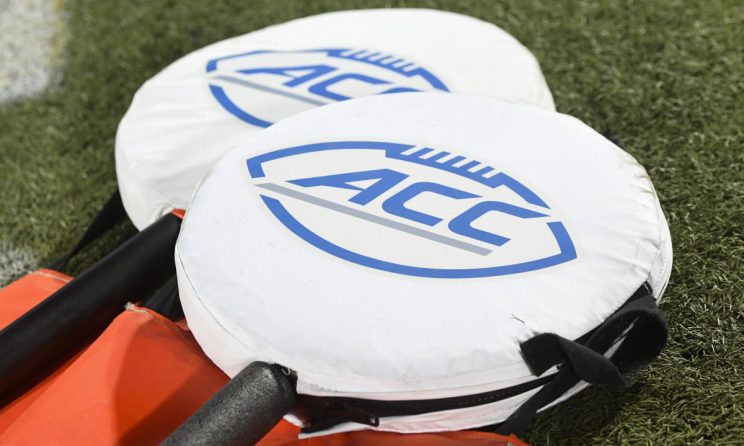
At a meeting Wednesday night, ACC presidents further explored expansion and again put off a decision on the subject, sources tell Yahoo Sports — a signal that dissension exists among the group.
League administrators have spent the last several days seriously examining the possibility of adding Pac-12 schools Stanford and Cal, as well as SMU of the American Athletic Conference. Conversations have been described as serious in nature, as conference officials have reviewed financial models for adding all three programs or just the two from the Pac-12.
While a majority of the league is in support of the expansion plan, a handful of programs — four to five — are pushing back against the move. The league needs a three-fourths majority — 12 votes of the 15 members — to approve any expansion measure. Notre Dame, a partial conference member in football and a full member in all other sports, receives a vote and supports the expansion.
The presidents’ meeting Wednesday follows a week of intense meetings over a potential expansion plan that, at first, included Arizona, Arizona State, Utah, Stanford and Cal. Arizona, ASU and Utah joined the Big 12 last week after Oregon and Washington committed to the Big Ten, a cascade of defections that left the Pac-12 in ruin.
Over the weekend, momentum gathered to continue the ACC’s expansion pursuit, with commissioner Jim Phillips steering league leaders. However, a delay in a decision is an obvious sign of disagreement among some.
Several stakeholders, from inside and outside of the league, detailed the issues with Yahoo Sports.
ACC expansion is looking less likely by the day as its presidents continue putting off a vote. (Michael Allio/Icon Sportswire via Getty Images)
Why does this work?
Ask the academics and they’ll tell you that this move works splendidly.
Stanford is No. 3 in the U.S. News & World Reports rankings of the top universities in America. Think of it like the AP poll for higher education institutions. Cal is No. 20. Those two programs would give the ACC seven top-30 institutions — the most of any FBS league. Five members are currently in the top 30, including Duke (10), Notre Dame (19), Virginia (25) and North Carolina (29). To that end, SMU is ranked No. 72. While that pales in comparison to the others, it’s a solid showing.
The additions make stronger an already strong academic league. But is that the driving force for such moves? Considering that decision-makers in this case are the 15 university presidents, do not discount such an academic component.
———————
Each of the three schools, if they are invited, would join the ACC at a bargain. At a time when many ACC members are publicly (FSU) and privately (Clemson, Miami, UNC and others) bellyaching about additional revenue, that is important.
The negotiations with Cal and Stanford, a desperate pair after the demise of the Pac-12, have centered on them only receiving a partial share of the league’s TV distribution, potentially in the 60-70% range.
SMU offers even more of a discount. With a serious desire to join a power league and a group of mega boosters at the ready, the Mustangs are offering to forego at least five and as many as seven years of conference distribution.
[Join or create a Yahoo Fantasy Football league for free today]
These two items are not insignificant. For many within the league, the driving force is the financial piece. A clause in the ACC’s contract with ESPN requires the network to pay the league an equal share for each new conference member.
If those new members do not take a full share, the remaining shares can be distributed to current league members, both offsetting travel costs and maybe even increasing annual revenue. That’s a big maybe. While the contract stipulates what is called a “pro-rata” share from ESPN, it’s unclear if the network is receptive to distributing three more full shares. The network has been selective lately.
“That’s the crux of the issue,” says one ACC official.
———————
SMU’s Dallas-Fort Worth region and Cal and Stanford’s San Francisco Bay metro area combine for about 12.5 million people. They rank fourth and 13th, respectively, in the country.
That’s a lot of eyeballs. That’s also a lot of potential additional television revenue for ESPN and the ACC Network in the form of what’s called “in-state carriage rates.” Most conference networks have two rates to TV distributors: a more costly in-state rate covering each state in which a member resides; and a lower out-of-state rate that covers all areas.
Picking up Texas and California may produce additional revenue as the league can impose in-market rate increases for those states, or at the very least, for those large metro areas.
The geography goes beyond network rates. Texas and California are the nation’s two most populous states and rich with football talent.
———————
Have you heard the old saying, “Strength in numbers”? Well, it applies here.
By 2024, the Big Ten will have swollen to 18 teams. The SEC and Big 12 will be at 16. There is pressure on the ACC to grow as well in a world where the biggest brands of the sport are consolidating into a smaller group. FBS will almost invariably drop from five power conferences to four and from 10 total leagues to nine.
“I don’t know that the ACC can afford to stay at 14,” says one ACC source. “The smart thing is to get bigger.”
There’s another old saying: If you’re not growing, you’re dying.
Well, here we are.
Why doesn’t this work?
If you were to start in Syracuse, New York, the ACC’s northernmost member, and drive to each ACC campus, it would take you — if you didn’t stop — about 45 hours to complete the trip.
If you were to drive from Palo Alto, California, (the home of Stanford) to Raleigh, North Carolina, (home of NC State and also the ACC’s most central location), it would take you … 45 hours.
Get the point? Seven of the ACC’s 14 full members are less than 200 miles from one another. The Bay Area is at least 2,000 miles for most ACC schools.
Traveling a football or basketball team there is one thing. Those sports, especially football, pay for themselves in the travel department. However, most Olympic sports lose millions every year. And now schools plan to ship their volleyball, soccer and swimming teams across the country? The financial piece of this isn’t even the most important. This is a four-time zone jump that features four and five-hour flight times.
For all the hubbub about athlete healthcare and well-being — much of that coming from this very league’s commissioner — it’s tough to swallow such an endeavor.
———————
Last month, at a board of trustees meeting, Florida State’s own president suggested the Seminoles, without any additional revenue from the league, will exit the conference.
It was a jarring comment — one that left many officials around the sport stunned and had FSU’s own conference mate, North Carolina AD Bubba Cunningham, publicly criticizing the comments. The financial situation in the ACC has long-been discussed.
ACC schools are handcuffed for another 13 years as part of a binding agreement tied to an ESPN contract that pays league members only a fraction of Big Ten and SEC TV cash. The ACC announced a distribution of $39 million last year, most of which came from the TV contract. By 2025, the SEC and Big Ten are expected to be distributing more than $60 million, and maybe even $70 million per school. The ACC’s amount will only slightly and gradually rise.
The fear among many in the league is that it will grow uncompetitive with its non-conference foes as the gap between it and the other two widens. FSU is not alone in its frustration over financials. Seven ACC schools were involved this spring in an organized effort to explore an exit path from the conference, such as dissolving the league entirely.
So, what’s our point?
The latest expansion proposal would still leave the elephant lurking in the room. The moves are not expected to grow revenue by a significant number and any negotiations with ESPN over the additions will not reopen the grant of rights, the agreement stretching through 2036 by which ACC teams are bound.
Will there be additional revenue if Stanford, Cal and SMU are added? Yes. Will much of it be spent on travel to those places? Probably.
“We are exhausting all options,” says one league administrator. “Jim is trying to do his due diligence.”
But in this case, one adds, is the juice worth the squeeze?
———————
Some wonder if these two or three schools are the right fit at this time.
Stanford sponsors six sports that have no home in the ACC, and its president, Marc Tessier-Lavigne, just resigned after an investigation found he falsified data in research projects. Meanwhile, Cal is a mess financially, with an athletic debt of more than $400 million ($200 million of which is traced back to poor financing of its stadium renovation). The university, in fact, subsidized the Cal athletic department to the tune of $31 million last year.
And then there’s SMU, a small, private school whose NCAA death penalty in the 1980s still lingers for some. The school’s deep-pocketed boosters are prepared to support the university for at least five years — both impressive and concerning for some.
Is SMU too rich? That may seem like an odd thing, but a similar issue kept Liberty out of a league for years. If the goal is to beat your fellow conference members, why add one so well-resourced and willing to spend?






